Designing a backsplash for a galley kitchen is an essential aspect of maximizing both style and functionality in a small space. The galley kitchen, known for its narrow layout with parallel countertops, demands a backsplash that enhances the room’s visual appeal while providing practical protection against splashes and spills. In a galley kitchen, every detail counts, and the backsplash serves as a focal point that can tie together the entire design. Whether you prefer a minimalist approach or a bold statement, the right backsplash can make your galley kitchen feel more spacious and cohesive.
When choosing a backsplash for a galley kitchen, it’s important to consider the overall aesthetic you wish to achieve. If your goal is to make the space appear larger, light-colored backsplashes with reflective surfaces are an excellent choice. Materials like glass tiles, glossy ceramic tiles, or even mirrored backsplashes can help bounce light around the room, creating an illusion of more space. These options work particularly well in galley kitchens that lack natural light, as they can brighten up the area and make it feel more open and inviting.

For those looking to add a touch of luxury to their galley kitchen, natural stone or marble backsplashes can create a sophisticated and timeless look. The natural variations in stone add depth and texture, bringing a sense of richness to the space. However, it’s important to note that natural stone requires regular sealing and maintenance to keep it looking its best, especially in a high-use area like a kitchen. If you’re drawn to the beauty of stone but want something more low-maintenance, porcelain or ceramic tiles that mimic the look of natural stone can be a practical alternative.
Another popular option for galley kitchen backsplashes is subway tiles. These classic tiles have been a staple in kitchen design for decades, and their simple, rectangular shape fits well with the linear layout of a galley kitchen. Subway tiles are versatile, available in a range of colors, and can be arranged in various patterns, such as herringbone, vertical, or offset brick. This flexibility allows you to customize the look to suit your style, whether you prefer a traditional, modern, or eclectic aesthetic. Additionally, subway tiles are relatively affordable and easy to clean, making them a practical choice for many homeowners.

For those who want to make a bold statement, a patterned or mosaic backsplash can add visual interest and personality to a galley kitchen. Whether you opt for intricate geometric designs, colorful mosaic tiles, or a bold, graphic pattern, a statement backsplash can serve as the focal point of your kitchen. This approach works especially well in galley kitchens with neutral cabinetry and countertops, as it adds a layer of texture and color that can transform the space from ordinary to extraordinary. However, it’s important to balance bold patterns with the rest of the kitchen’s design to avoid overwhelming the small space.
Functionality is another critical consideration when selecting a backsplash for a galley kitchen. Given the close quarters, it’s essential that the backsplash materials are durable and easy to clean. Kitchens are prone to splashes from cooking and food preparation, so a non-porous, wipeable surface is ideal. Materials like ceramic, porcelain, and glass are not only attractive but also highly resistant to stains and moisture, making them perfect for a kitchen environment. In contrast, porous materials like unsealed stone or wood may require more upkeep and can be more susceptible to damage over time.

The height of the backsplash is another factor to consider in a galley kitchen. While standard backsplashes typically extend from the countertop to the bottom of the upper cabinets, full-height backsplashes that extend all the way to the ceiling are becoming increasingly popular. In a galley kitchen, this can create a dramatic, seamless look that draws the eye upward, making the space feel taller and more expansive. A full-height backsplash can also provide additional protection against splashes and is particularly effective when paired with open shelving or no upper cabinets, as it offers a continuous, cohesive look.
Color is a powerful tool in backsplash design, especially in a galley kitchen where space is limited. Light, neutral colors can help make the kitchen feel larger and more open, while darker colors can add depth and contrast, creating a cozy, intimate atmosphere. If you want to introduce a pop of color, the backsplash is an ideal place to do so. Whether it’s a vibrant blue, a bold red, or a soft pastel, a colored backsplash can inject personality and style into the kitchen. Just be sure to choose a color that complements the other elements in the space, such as the cabinetry, countertops, and flooring.
Texture and finish are other important aspects to consider when selecting a backsplash for a galley kitchen. A glossy finish can reflect light and enhance the sense of space, making it a good choice for smaller kitchens. On the other hand, a matte finish can add a subtle, sophisticated touch, particularly in modern or industrial-style kitchens. Textured tiles, such as those with a 3D pattern or a hand-crafted look, can add depth and interest to the backsplash, creating a tactile experience that elevates the overall design. However, textured surfaces can be more challenging to clean, so it’s important to weigh the aesthetic benefits against the practical considerations.
One often-overlooked aspect of backsplash design is the grout. The color and thickness of the grout lines can have a significant impact on the overall look of the backsplash. In a galley kitchen, where space is at a premium, choosing a grout color that matches the tiles can create a more seamless, unified look. Conversely, contrasting grout can highlight the shape and pattern of the tiles, adding a graphic element to the design. Epoxy grout is a good option for kitchen backsplashes, as it is more resistant to stains and moisture than traditional cement-based grout, making it easier to maintain.
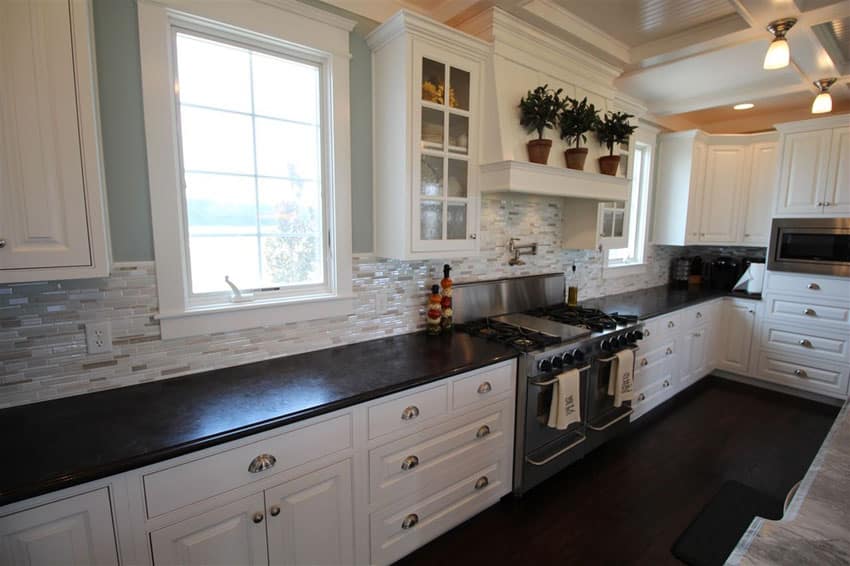
If you’re working with a small budget, there are still plenty of options for creating a stylish backsplash in a galley kitchen. Peel-and-stick tiles, for example, offer a cost-effective and easy-to-install solution that can mimic the look of more expensive materials. These tiles are available in a variety of designs, from classic subway tiles to modern geometric patterns, and can be installed directly over existing surfaces, making them ideal for renters or those looking for a quick update. Another budget-friendly option is to use paint or wallpaper as a backsplash. While not as durable as tile, these options can add color and pattern to the kitchen at a fraction of the cost.
Lighting plays a crucial role in enhancing the appearance of a backsplash in a galley kitchen. Under-cabinet lighting can highlight the backsplash, bringing out the colors and textures of the materials and making the space feel brighter and more inviting. LED strip lights are a popular choice for this purpose, as they are energy-efficient and can be easily installed under the cabinets. In a galley kitchen, where natural light may be limited, strategically placed lighting can make a significant difference in the overall ambiance and functionality of the space.
A backsplash can also be an opportunity to introduce some personalization into your galley kitchen. Custom tile designs, hand-painted tiles, or even a mural can add a unique touch that reflects your personality and style. If you’re artistic, you might even consider creating your own tile design or incorporating elements that have personal significance, such as a favorite color, pattern, or motif. This approach can make your galley kitchen feel truly special and one-of-a-kind.
Finally, when planning a backsplash for a galley kitchen, it’s important to consider how it will interact with the other elements in the space. The backsplash should complement the countertops, cabinetry, and flooring, creating a cohesive look that ties everything together. For example, if you have busy countertops with a lot of movement or color, a simpler, more neutral backsplash may be the best choice. Conversely, if your countertops are more understated, you can use the backsplash to introduce pattern or color. Balancing these elements will help create a harmonious and visually appealing kitchen design.
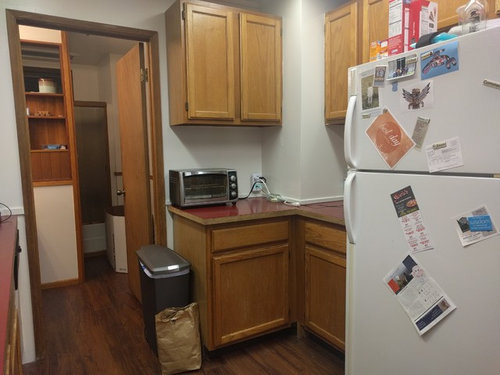
Common Mistakes to Avoid
Overwhelming the Space with Bold Patterns: In a small galley kitchen, it’s easy to get carried away with bold patterns or bright colors. However, these choices can quickly overwhelm the space and make it feel cramped. It’s important to balance bold design elements with more neutral surroundings to maintain a sense of openness.
Ignoring the Importance of Grout: Grout lines may seem like a minor detail, but they can significantly impact the overall look of your backsplash. Choosing a grout color that contrasts too sharply with your tiles can create a busy, disjointed appearance. Opt for a grout color that complements the tile for a more cohesive look.
Selecting the Wrong Materials: Some materials, like unsealed stone or porous tiles, may not be suitable for a kitchen environment due to their susceptibility to stains and water damage. Always choose materials that are easy to clean and maintain, particularly in a high-use area like a galley kitchen.

Overlooking the Impact of Lighting: Without proper lighting, even the most beautiful backsplash can go unnoticed. Neglecting under-cabinet lighting or not considering how natural light interacts with your backsplash can result in a design that doesn’t fully shine. Make sure to plan for adequate lighting to highlight your backsplash.
Mismatching the Backsplash with Other Elements: A backsplash that doesn’t complement the countertops, cabinetry, or flooring can disrupt the overall design harmony of the kitchen. Ensure that the colors, patterns, and materials of your backsplash work well with the other elements in your kitchen to create a unified look.
DIY Installation Without Proper Preparation: While installing a backsplash might seem like a simple DIY project, it requires precision and careful planning. Mistakes in measurements, cutting, or grout application can lead to a less-than-perfect finish. If you’re not confident in your skills, it may be worth hiring a professional to ensure the best results.

What is the best material for a backsplash in a galley kitchen?
The best material for a backsplash in a galley kitchen depends on your priorities. If you’re looking for easy maintenance, materials like ceramic or glass tiles are excellent choices because they are non-porous and easy to clean. For a more luxurious look, natural stone like marble can add elegance but requires more upkeep. Porcelain tiles offer a good balance of durability and style, making them a popular choice for many homeowners.
How high should a backsplash be in a galley kitchen?
The height of a backsplash in a galley kitchen typically extends from the countertop to the bottom of the upper cabinets, which is around 18 inches. However, for a more dramatic effect, you might consider a full-height backsplash that reaches to the ceiling. This can create a seamless look and make the kitchen feel taller and more expansive.
Can I use peel-and-stick tiles for a backsplash in my galley kitchen?
Yes, peel-and-stick tiles can be a great option for a backsplash in a galley kitchen, especially if you’re on a budget or renting. These tiles are easy to install, require no grout, and can be applied directly over existing surfaces. They come in a wide range of designs, allowing you to achieve a high-end look without the cost or commitment of traditional tiles.

Should I choose a light or dark backsplash for my galley kitchen?
The choice between a light or dark backsplash depends on the overall look you want to achieve. A light-colored backsplash can make a galley kitchen feel larger and brighter, while a dark backsplash can add depth and contrast, creating a cozy and dramatic atmosphere. Consider the amount of natural light in your kitchen and the colors of your cabinetry and countertops when making your decision.
How do I clean and maintain a backsplash in a galley kitchen?
Cleaning and maintaining a backsplash in a galley kitchen is relatively straightforward. For most materials, such as ceramic or glass tiles, simply wiping down the surface with mild soap and water will keep it clean. Avoid using abrasive cleaners that can damage the tiles or grout. If you have a natural stone backsplash, it’s important to seal it regularly to protect it from stains and moisture.
Can I mix different tile styles in my galley kitchen backsplash?
Yes, mixing different tile styles can add visual interest and texture to your galley kitchen backsplash. For example, you might use subway tiles as the main field and accent them with a mosaic or patterned tile. However, it’s important to maintain a sense of balance and cohesion. Stick to a complementary color palette and avoid overcomplicating the design, as too many different styles can make the space feel cluttered.

Farmhouse Sink With Spanish Tile Backsplash
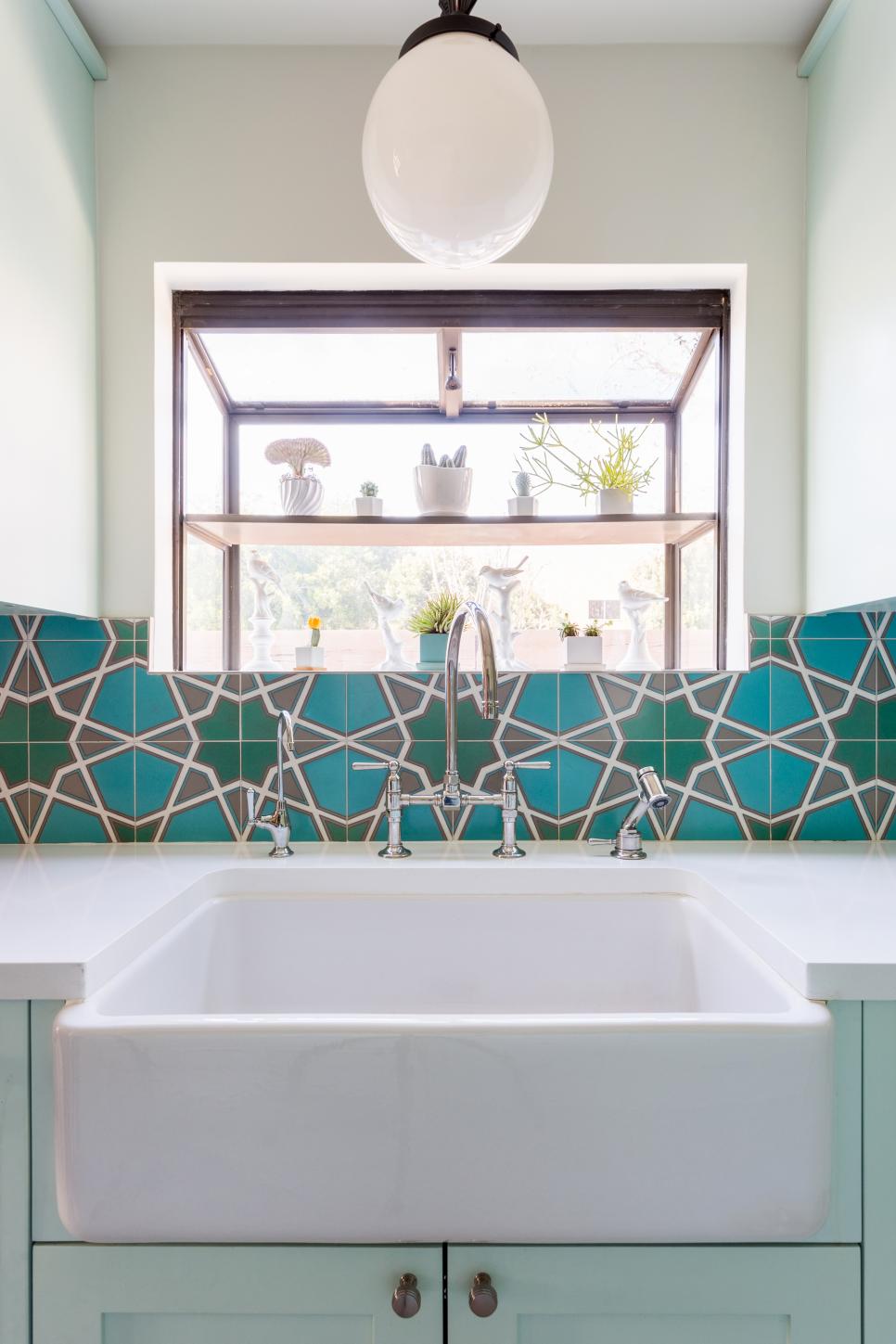
Traditional Kitchen Backsplash
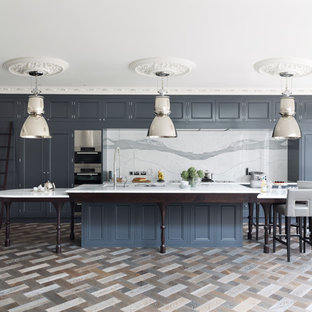
Galley Kitchen with Ceramic Splashback Design Ideas & Remodeling
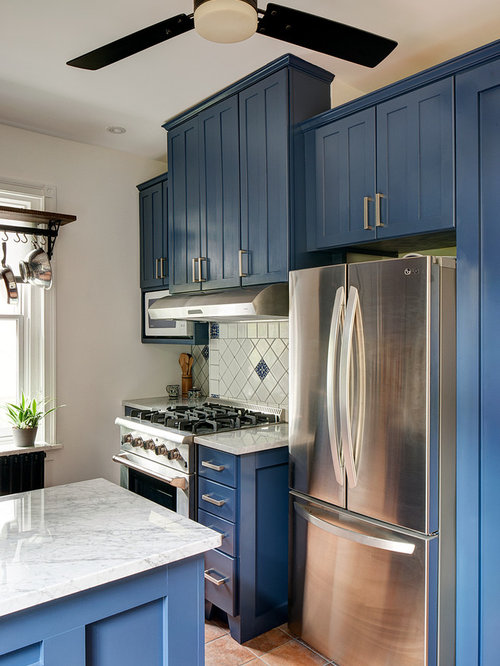
Related Posts:
- Beige Backsplash For Kitchen
- Ceramic Tile Designs For Kitchen Backsplashes
- Arts And Crafts Kitchen Backsplash
- How To Do Kitchen Backsplash Glass Tile
- Punched Tin Backsplash Kitchen
- Stainless Steel Backsplash Kitchen Ideas
- Installing Mosaic Tile Backsplash In Kitchen
- Unique Kitchen Backsplash Ideas Cheap
- Kitchen Backsplash Marble Tiles
- Kitchen Backsplash Tile Art